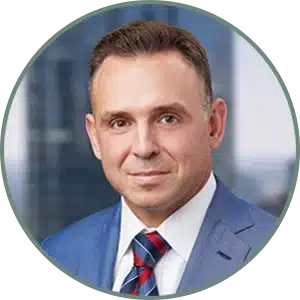
Content Reviewed by:
Michael F. Bonamarte, IV
Content Reviewed by: Michael F. Bonamarte, IV
Since 2005, Michael Bonamarte IV has been a passionate advocate for victims of negligent conduct, corporate malfeasance, and medical malpractice. He has won numerous awards and recognitions, including Best Lawyers in America and Super Lawyers’ Rising Star. He has presented for the American Association for Justice, the AAJ Nursing Home Litigation Group, the John Marshall Law School, and numerous other legal associations. He regularly lectures at Chicago-area aging organizations about nursing home abuse. His writings have been published by the American Bar Association, the Chicago Daily Bulletin, and numerous other prestigious publications.
Doctors May Miss Stroke Signs in Young People
According to the American Stroke Association, strokes are on the rise among young people and in the past decade there has been a 44% increase in the number of young Americans hospitalized due to stroke. While that is an issue in itself, doctors and medical agencies are proving they may not be prepared. Some providers still have the perception that the disease only happens in older people. This means younger people who suffer strokes are being swiftly dismissed or not provided the correct, quick treatments needed in a critical timeframe. For each minute that blood flow is interrupted, two million brain cells will be lost, leaving many younger stroke victims with significant cognitive or physical disabilities.
Medical Malpractice Cases Related to Stroke
The majority of malpractice lawsuits related to the emergency management of stroke allege a failure to diagnose and failure to timely treat, a failure to timely refer to a specialist, and allegations of a lack of informed consent. In an August 10, 2019 article titled Systematic Review of Malpractice Litigation in the Diagnosis and Treatment of Acute Stroke and published in the AHA Journals, three large legal databases (Westlaw, LexisNexis, and VerdictSearch) were used to search for jury verdicts and settlements in cases related to the acute care of stroke patients in the U.S.
- 246 medical malpractice cases related to the acute management of ischemic stroke
- 26 medical malpractice cases related to intracranial hemorrhage
- 71 cases specifically alleged a failure to treat with tPA (tissue-type plasminogen activator
- 7 cases alleged a failure to treat, or to timely treat, with thrombectomy
- Overall there were 151 cases (56%) which ended with no payout
- 74 cases (27%) were settled out of court
- 47 cases (17%) went to court and resulted in a verdict for the plaintiff
- Seventy-nine cases (30%) included only a doctor/doctors as a defendant
- 132 cases (50%) included both a doctor and a hospital as defendants
- 53 cases (20%) included only a hospital as a defendant
- 9 of these cases also involved a nurse/nurse practitioner/physician’s assistant as co-defendants
The average payout in settlements was $1,802,693 – and the average payout in plaintiff verdicts was $9,705,099. Any patient who believes he or she has suffered an injury due to stroke care negligence of a U.S. medical professional can file a medical malpractice claim.
Learn the Signs of Stroke
Younger generations seem to present signs of stroke with the severe onset of a headache, according to doctors at Cleveland Clinic. Also, these stroke warning-signs and Beyond F.A.S.T. campaign are provided by the American Stroke Association.
- Sudden NUMBNESS or weakness of face, arm, or leg, especially on one side of the body
- Sudden CONFUSION, trouble speaking or understanding speech
- Sudden TROUBLE SEEING in one or both eyes
- Sudden TROUBLE WALKING, dizziness, loss of balance or coordination
- Sudden SEVERE HEADACHE with no known cause
Other symptoms may include:
- Vertigo, like the room, is spinning.
- Imbalance
- One-sided arm or leg weakness.
- Slurred speech or dysarthria
- Double vision or other vision problems
- A headache
- Nausea and or vomiting
If someone shows any of these symptoms, immediately call 9-1-1 or emergency medical services. Likewise, doctors are expected to be knowledgeable about these warning signs and provide the correct diagnosis and quick treatments. When they don’t, the results are often damaging and only cause a patient’s condition to worsen. Damages may be excessive and include medical costs, pain and suffering, lost wages, and future care expenses.
Free Consultation: Levin & Perconti Medical Malpractice Attorneys in Chicago
If you were a patient at an Illinois health system and suspect medical negligence may have contributed to further injury caused by stroke or the death of a child or young adult, please call us toll-free at (877) 374-1417, or in Chicago at (312) 332-2872 for a FREE consultation.



